
The computer processor can work at full power or idle. It is not always a complete load or, on the contrary, the inconsistency of the CPU may be due to the user's actions. In order to view the load on the processor, find out which applications or processes are loaded, and you can track it using third-party programs or standard Windows monitors.
Thus, AIDA64 makes it possible to load the processor in the context. Unfortunately, the overall workload of the processor is not to see the program.
Method 2: Process Explorer
Process Explorer - This program can quickly view data on the current operation of computer components. At the same time, Microsoft itself has rights to it, which means the appropriate level of support and compatibility with Windows. A distinctive feature of the program is also the fact that its main version is portable and does not require installation. You can see in it the CPU load in two steps.
Go to the official website Process Explorer
- In the main window of the program, pay attention to the "CPU usage" parameter, which displays the current load on the processor. For details click on the first schedule responsible for outputting the CPU information.
- On the scale of the left, the workload of the processor in real time is displayed, and on the graph on the right you can follow the work of the CPU as a whole, when necessary, choosing the moment you are interested in.
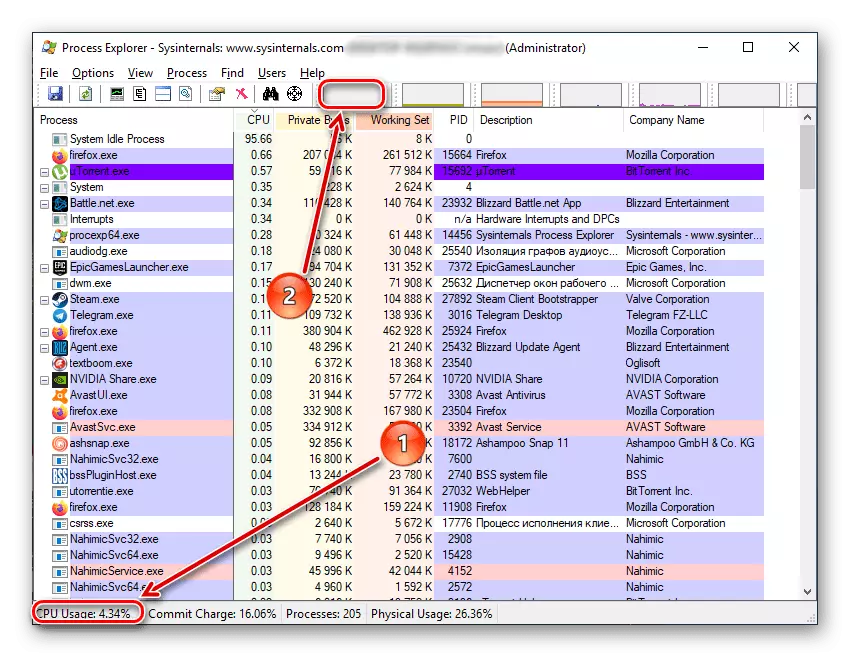
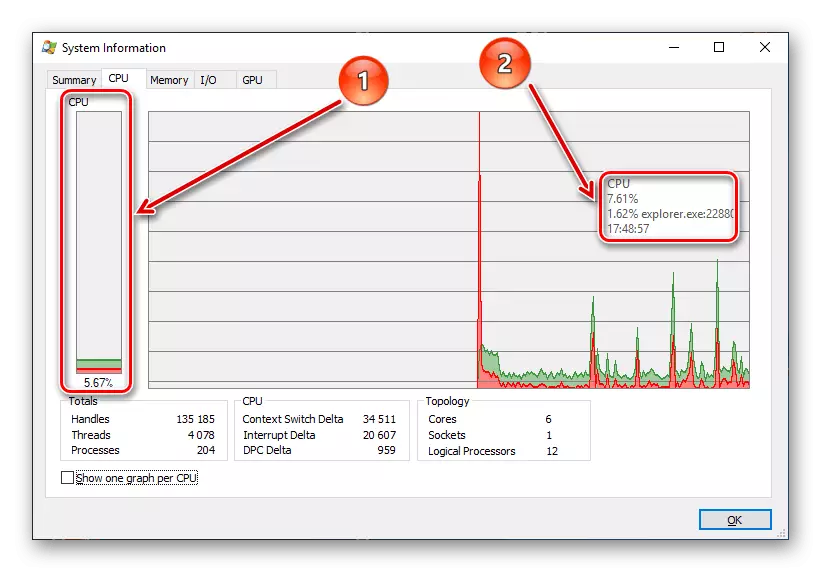
Please note that the greatest color will be denoted by a total load, and the red is how much the cpu is the most resource-intensive process. In addition, clicking on "SHOW ONE GRAPH PER CPU" , You can see the load on individual streams.
The interim outcome states that Process Explorer appears a rather informative and convenient program when you need to look at the total load on the CPU and its streams.
Method 3: Systems
A method that does not require a third-party installation, and accessible to each owner of Windows - the use of the Task Manager, which immediately displays information about the processor.
- Using the Ctrl + Alt + Delete key combination or by searching in the Start panel, open the Task Manager.
- Already on the "Processes" tab of the CPU letters, you can see the overall load on the processor. For more information, go to the "Performance" tab.
- Near the first square graphics on the left you can immediately see the loading of the processor, as well as on the full schedule and under it. In this case, you can trace the process in real time, mark the maximum and minimum points. To view the load on individual streams, open the "Resource Monitor".
- Resource monitor will allow you to track not only the processor load, but also what frequency relative to the maximum is taken. In addition, on the left, the load on the CPU flows is derived.
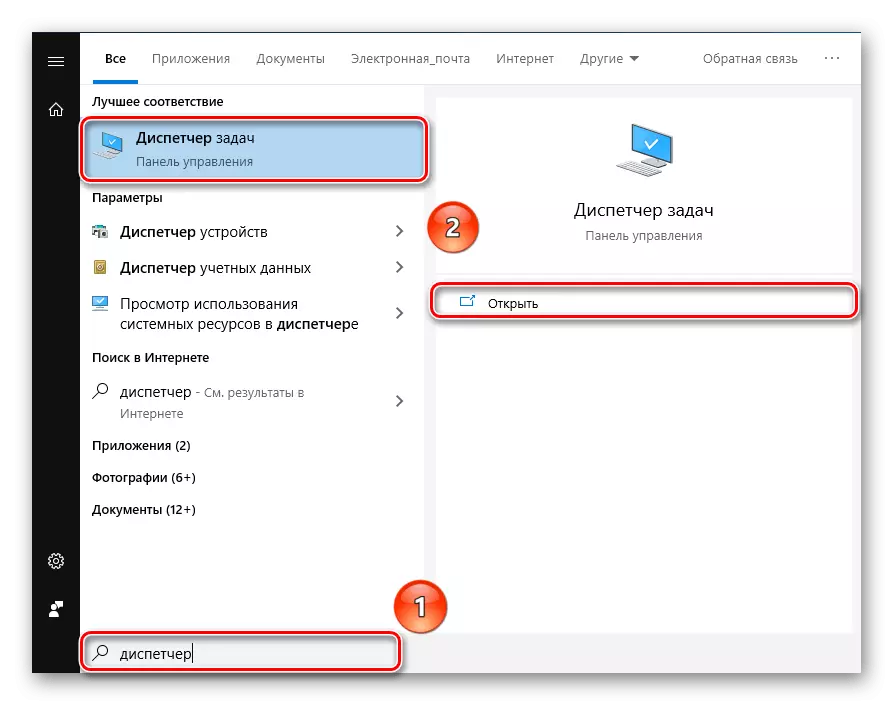
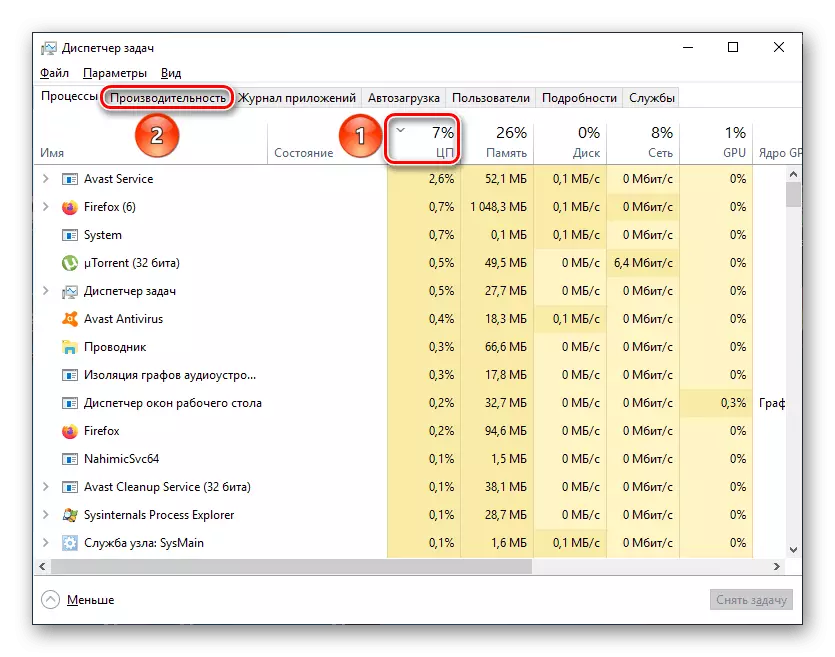
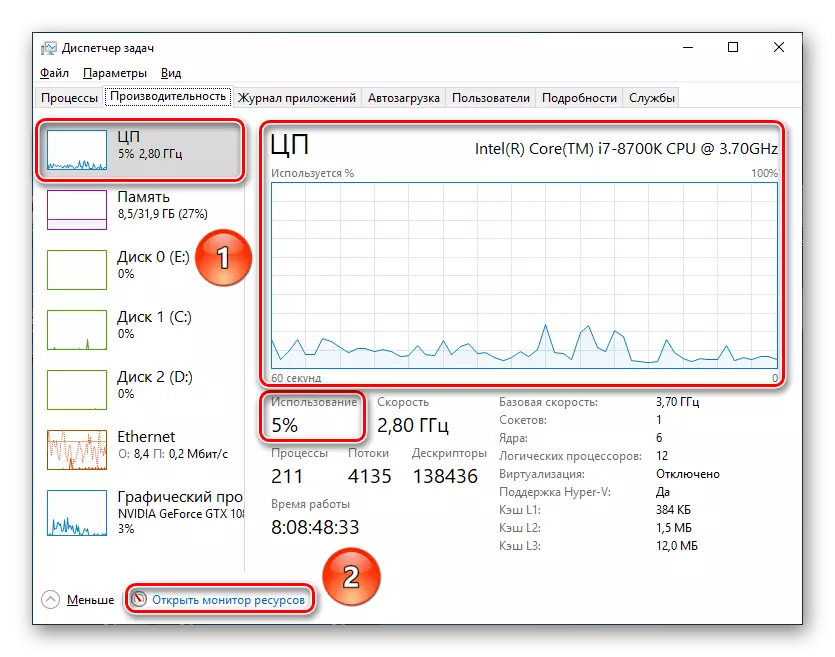
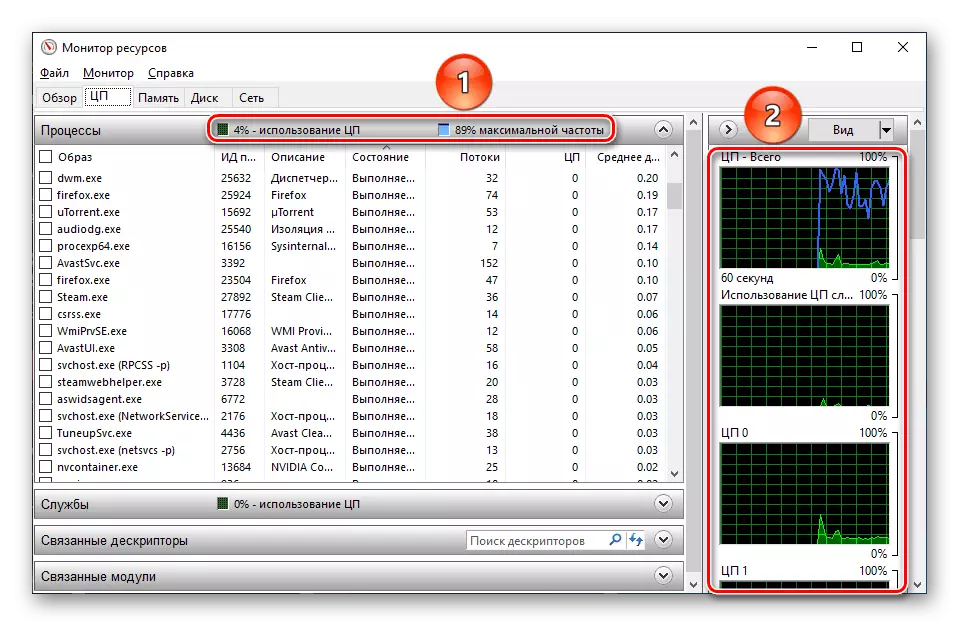
It can be said that the standard Windows tools in the question under consideration are more than a comprehensive solution for viewing a general load on CPU and in a sectional for individual threads.
As a result, it remains to be said that to find out the workload of the processor in real time and with fixation at certain points is not difficult thanks to the built-in OS monitors and third-party software type AIDA64 and Process Explorer.
